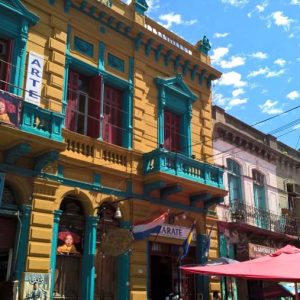Most visitors to Jordan head straight for Petra and the Dead Sea. They might even stay the night in the magical desert camps of Wadi Rum. Now, don’t get me wrong, these are some of the most wonderful sites on the planet and everyone should see them. But there is another side to Jordan with some of the biggest and most well preserved Greco-Roman sites you’ll ever see. It would be a shame to miss them.
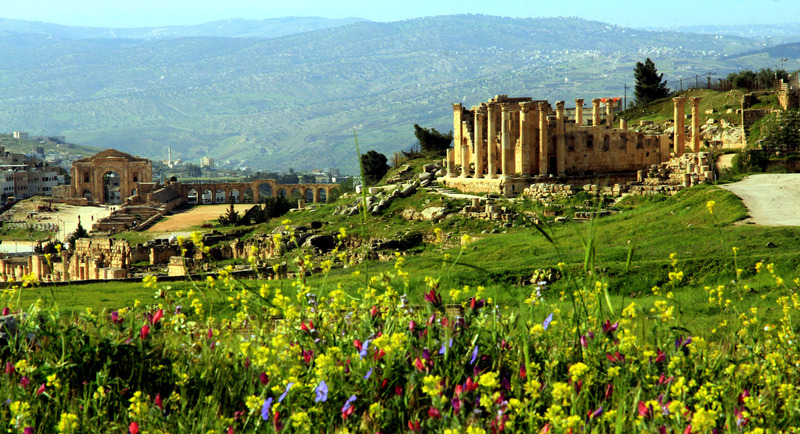 The most famous is Jerash. It was a Greek city (some say ‘Jerash’ derives from the Greek meaning ‘city of the old’ given its role as a place for wounded war veterans) but it was already old when the Greeks arrived. Archaeologists have found Neolithic remains suggesting settlements here that date back more than 6500 years. This is truly an ancient site.
The most famous is Jerash. It was a Greek city (some say ‘Jerash’ derives from the Greek meaning ‘city of the old’ given its role as a place for wounded war veterans) but it was already old when the Greeks arrived. Archaeologists have found Neolithic remains suggesting settlements here that date back more than 6500 years. This is truly an ancient site.
The Romans under the leadership of General Pompey conquered it in 63BC and renamed it Gerasa, making it one of their provincial capitals. They proceeded to build. Hidden under the sand for centuries, Jerash has been slowly excavated and rediscovered. And so much has been revealed. There are paved, colonnaded streets, grand forums, a vast hippodrome for chariot races, fountains, baths and temples. The remains of the city walls are still there and encompass a site of some 800,000 square metres. It is a place where you can really get under the skin of everyday life in ancient Rome.
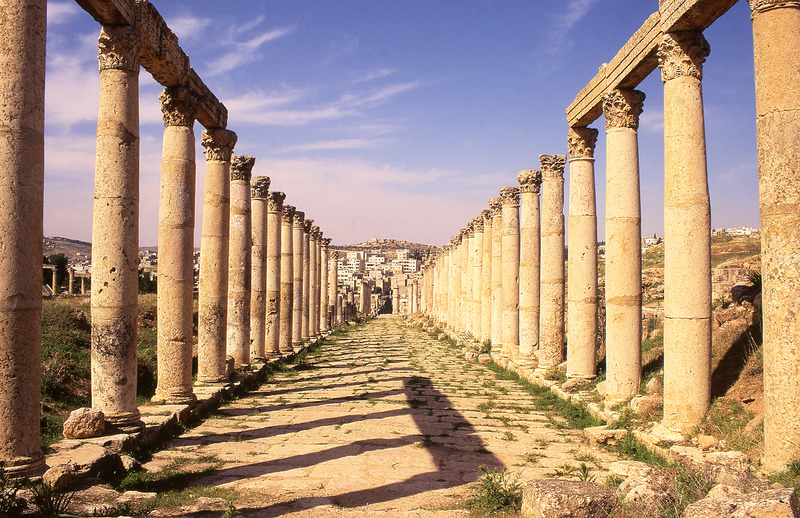 Jerash was part of the ‘Decapolis’, the ten cities on the eastern frontier of the Roman Empire in the Levant. They functioned as city states and reached from the southernmost Philadelphia (Amman) to Damascus in the North. This was an area, according to the New Testament, where Jesus preached. And standing on the paved Roman road in Jerash, where chariot wheels have scored their passage in the stone, one cannot help but wonder whether somewhere further along this road to Damascus, Paul experienced his wondrous conversion.
Jerash was part of the ‘Decapolis’, the ten cities on the eastern frontier of the Roman Empire in the Levant. They functioned as city states and reached from the southernmost Philadelphia (Amman) to Damascus in the North. This was an area, according to the New Testament, where Jesus preached. And standing on the paved Roman road in Jerash, where chariot wheels have scored their passage in the stone, one cannot help but wonder whether somewhere further along this road to Damascus, Paul experienced his wondrous conversion.
In Jerash’s hippodrome, you can sometimes see shows today – chariot races and gladiator fights – and you may well catch, too, the unlikely sight of a bag piper in Jordanian military dress. I was lucky enough to be there when there was a show of quite a different order – Andrea Bocelli in concert as part of Jerash’s annual September Arts Festival.
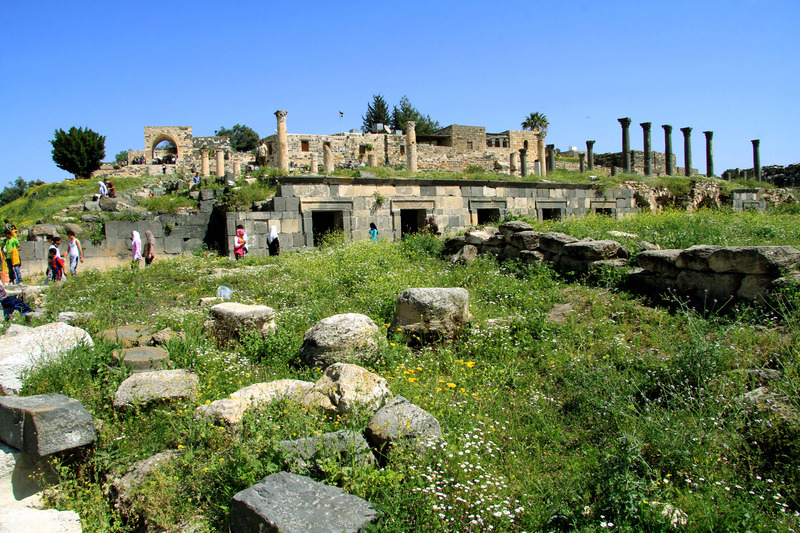 Gadara was another of the Decapolis towns, now known as Umm Qais. It is to the north of Jerash and in one of the most astonishing sites imaginable. From its hilltop you look across to the Lake of Tiberias, otherwise known as the Sea of Galilee, shimmering in the heat. This was the place that Jesus “drove out the demons” from two local men into a nearby herd of pigs – the Gadarene swine that threw themselves into the Sea of Galilee. Across the valley from Umm Qais the long ridge of hills that are the Golan Heights rises and, as you approach the ruins, you can see from the road across the border into Syria. This is a place where ancient and modern history come together.
Gadara was another of the Decapolis towns, now known as Umm Qais. It is to the north of Jerash and in one of the most astonishing sites imaginable. From its hilltop you look across to the Lake of Tiberias, otherwise known as the Sea of Galilee, shimmering in the heat. This was the place that Jesus “drove out the demons” from two local men into a nearby herd of pigs – the Gadarene swine that threw themselves into the Sea of Galilee. Across the valley from Umm Qais the long ridge of hills that are the Golan Heights rises and, as you approach the ruins, you can see from the road across the border into Syria. This is a place where ancient and modern history come together.
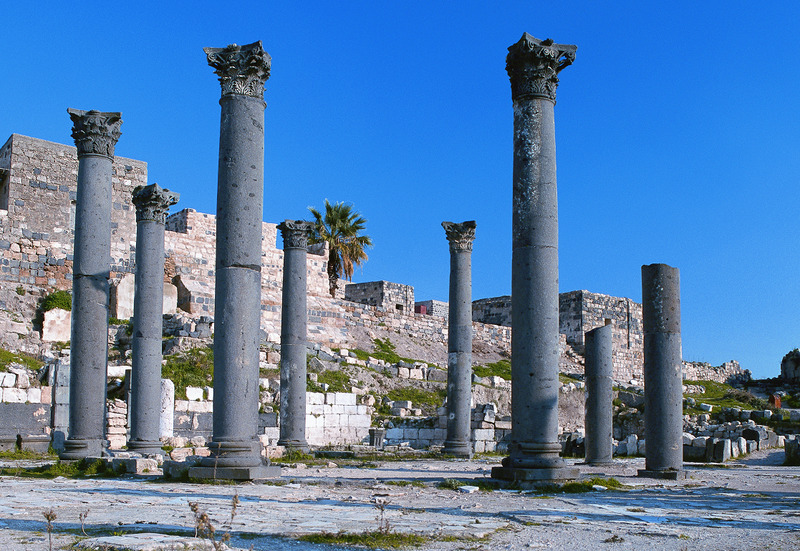 Umm Qais itself has not been excavated as extensively as Jerash and there is, no doubt, a lot still waiting beneath the sand. There is already, however, a well-restored theatre, uniquely constructed out of black basalt which gives it something of a sombre air. An octagonal church stood here and its pillars still rise up from the marble floor. There is, too, a nymphaeum, or Roman fountain, and another paved Roman road. More is certainly waiting to be discovered still beneath the sand. Who knows? One day a site as vast as Jerash may be uncovered, a place that unites Greek, Roman and biblical history in this most breathtaking of settings.
Umm Qais itself has not been excavated as extensively as Jerash and there is, no doubt, a lot still waiting beneath the sand. There is already, however, a well-restored theatre, uniquely constructed out of black basalt which gives it something of a sombre air. An octagonal church stood here and its pillars still rise up from the marble floor. There is, too, a nymphaeum, or Roman fountain, and another paved Roman road. More is certainly waiting to be discovered still beneath the sand. Who knows? One day a site as vast as Jerash may be uncovered, a place that unites Greek, Roman and biblical history in this most breathtaking of settings.
More information
Anna was a guest of the Jordan Tourism Board and stayed at the Le Royal Hotel in central Amman. You can read more of Anna’s travels in Jordan and elsewhere at www.annaselby.co.uk/#anna-s-blog


